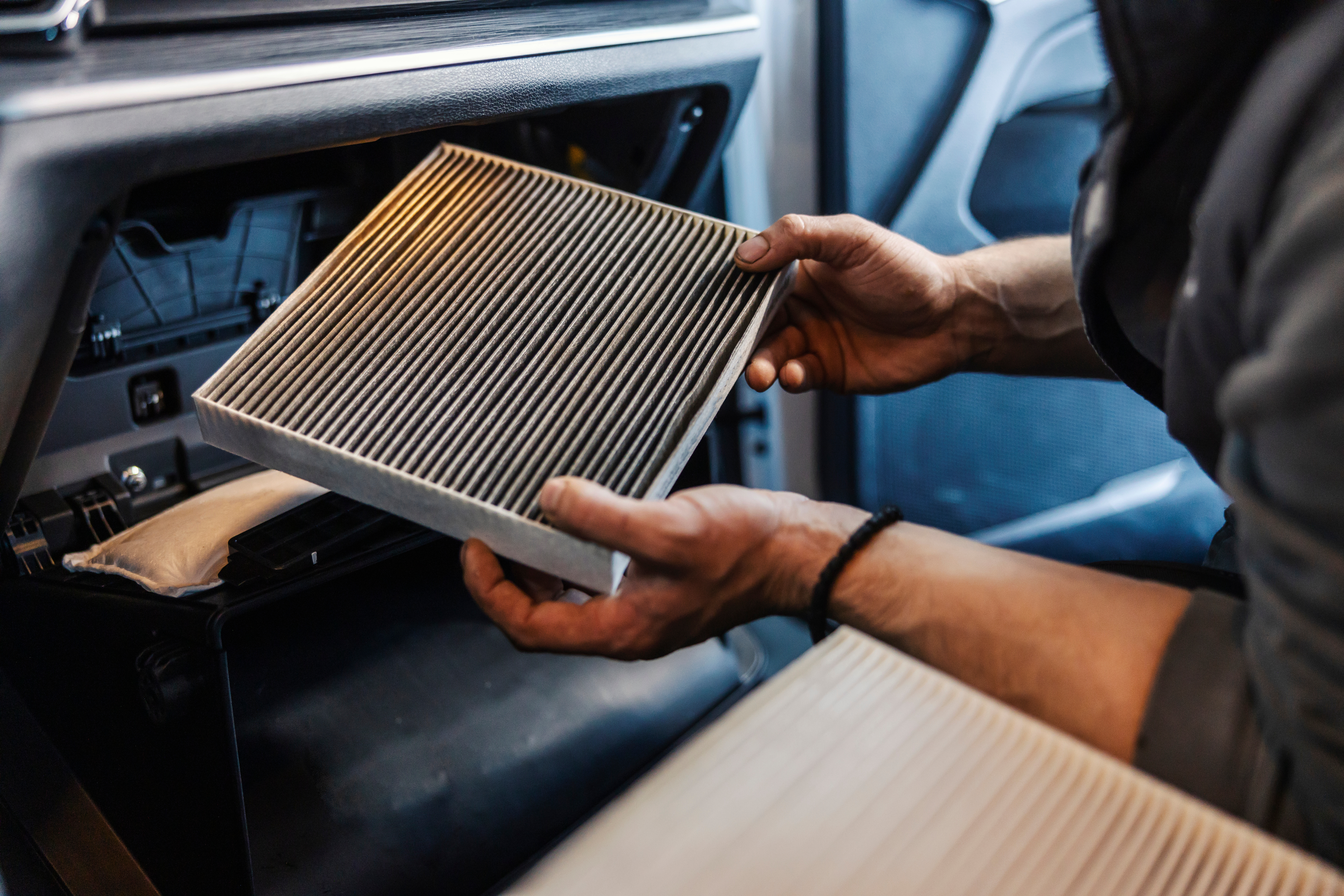Keeping your vehicle’s air conditioning system in good condition is essential for comfort and safety—especially during Boise’s scorching summers when cabin temperatures can soar well above 100°F. Many drivers are surprised when they bring their car in for A/C service and learn that not all refrigerants are the same. The two most common types in today’s vehicles are R134a and R1234yf, and understanding the difference between them can help you make better maintenance decisions, anticipate service costs, and understand your car’s environmental impact.
At Naylor’s Auto Repair, we help Boise drivers navigate this refrigerant change with clear information and certified service. Whether you’re driving a 2010 sedan with R134a or a 2022 SUV running on R1234yf, knowing how these refrigerants differ ensures your air conditioning system operates safely, efficiently, and legally under Idaho and federal environmental regulations.
Understanding Automotive Refrigerants: Why the Change Happened
Automotive refrigerants are the chemical compounds that make your air conditioning system work. When compressed and expanded inside your A/C system, these substances absorb heat from the cabin and release it outside, producing cool air.
For decades, cars used R12 (Freon) until it was phased out in the 1990s because of its harmful effects on the ozone layer. It was replaced by R134a, which did not damage the ozone layer but still contributed significantly to global warming due to its high Global Warming Potential (GWP) rating.
To address this, automakers transitioned to R1234yf, a next-generation refrigerant with dramatically lower environmental impact. R1234yf became the standard for most new vehicles sold in the United States after 2017.
The U.S. Environmental Protection Agency (EPA) mandated that all manufacturers gradually phase out R134a in favor of low-GWP refrigerants like R1234yf to meet environmental standards and reduce greenhouse gas emissions. As a result, Boise drivers now see both refrigerants in service centers, depending on their vehicle’s age and model.
R1234yf vs. R134a: Key Differences for Idaho Drivers
While both refrigerants cool the cabin, they differ in composition, cost, service requirements, and environmental performance.
R134a Refrigerant
- Introduced in the early 1990s to replace R12.
- Widely available and inexpensive.
- Typically used in vehicles made before 2016.
- Global Warming Potential (GWP): approximately 1,430.
- Easily serviced using common A/C equipment.
- Costs around $10–$20 per pound.
R134a is still used in many older vehicles throughout Boise, including popular models like the Toyota Camry, Honda Civic, and Ford F-150 from the early 2010s. It’s effective, reliable, and affordable, but environmentally outdated.
R1234yf Refrigerant
- Introduced around 2013 and adopted by most automakers after 2017.
- Designed to be eco-friendly, with a GWP under 1.
- More expensive and tightly regulated for safety.
- Requires specialized recovery and recharge machines.
- Costs approximately $80–$120 per pound.
While R1234yf performs similarly to R134a in cooling power, it’s a cleaner option that supports Idaho’s environmental efforts. The Society of Automotive Engineers (SAE) has confirmed that R1234yf provides 95–99% of the cooling efficiency of R134a, making it nearly identical in real-world performance.
Why R1234yf Costs More to Recharge
When Boise drivers bring in a newer vehicle for A/C service, they often notice that R1234yf recharges cost roughly double that of R134a. The reason isn’t just the refrigerant—it’s also the technology and safety measures required to handle it.
Key Cost Factors
- Refrigerant Price: R1234yf is significantly more expensive due to its complex manufacturing process and limited supply chain.
- Equipment Requirements: Shops must use EPA-approved R1234yf recovery and recharge machines. These systems are closed-loop, meaning no refrigerant escapes during service.
- Certification Standards: Technicians must hold EPA Section 609 certification to handle R1234yf safely.
- Flammability Control: R1234yf is mildly flammable, so service must follow precise safety procedures.
- System Calibration: Newer A/C systems have smaller refrigerant charges, requiring precise measurement within grams for optimal cooling and performance.
At Naylor’s Auto Repair, we’ve invested in certified R1234yf service equipment and training to ensure Boise drivers receive accurate, compliant, and safe refrigerant servicing—without the risks associated with improper handling.
Performance and Cooling Efficiency
A common question from Boise drivers is whether R1234yf cools as well as R134a. The difference in performance is minimal.
In most tests and real-world driving conditions, R1234yf cools the cabin to the same temperature as R134a, but it may take slightly longer in extreme heat. Fortunately, modern vehicle designs compensate for this through advanced condensers and compressor controls.
In Boise’s dry summer climate, where humidity levels are low but heat intensity is high, both refrigerants provide dependable cooling performance when the system is maintained properly.
Environmental and Regulatory Benefits of R1234yf
Environmental protection was the driving force behind the switch to R1234yf. The refrigerant has a Global Warming Potential (GWP) of less than 1, compared to R134a’s 1,430.
This means that, pound for pound, R134a traps over a thousand times more heat in the atmosphere than R1234yf. The difference is staggering when multiplied across millions of vehicles.
The EPA and the European Union’s MAC Directive both recognize R1234yf as the safest and most sustainable refrigerant currently available for automotive use. The widespread adoption of R1234yf is expected to reduce greenhouse gas emissions by 30 million metric tons of CO₂ equivalent nationwide in the coming years.
For Boise, which often experiences winter air inversions that trap pollutants, this transition supports cleaner air and healthier environmental outcomes for Treasure Valley residents.
Can You Convert an R134a System to R1234yf?
Many older vehicle owners wonder if they can retrofit their R134a system to use R1234yf. The answer is no—not safely or legally, without a complete system replacement.
Although conversion kits exist, they are not recommended by the EPA or most automakers. R1234yf systems require:
- Different hoses and seals to handle unique pressures.
- Specialized fittings to prevent contamination.
- Pressure sensors and expansion valves are calibrated for specific refrigerant flow rates.
Improper conversion can cause compressor failure, leaks, or system inefficiency. If you drive a pre-2016 vehicle, continue using R134a and focus on leak prevention, regular inspections, and professional service instead of conversion.
How to Identify Which Refrigerant Your Vehicle Uses
Boise drivers can determine their vehicle’s refrigerant type by checking the under-hood label or the A/C service port cap, which will specify either R134a or R1234yf.
If the label is missing or unclear, technicians at Naylor’s Auto Repair can verify your system type using your Vehicle Identification Number (VIN) or service database.
As a general rule:
- Pre-2016 models → R134a
- 2017 and newer → R1234yf
Knowing your refrigerant type helps you plan for accurate service costs and avoid confusion during A/C maintenance.
Tips for Maintaining Your A/C System in Boise’s Climate
A properly maintained A/C system not only cools your cabin but also improves fuel efficiency and prevents expensive repairs. Boise’s combination of dust, dry air, and summer heat makes proactive A/C care particularly important.
Maintenance Tips for Idaho Drivers
- Run your A/C monthly, even in winter. This keeps internal seals lubricated.
- Change your cabin air filter every 12,000–15,000 miles. Dust can restrict airflow and strain the system.
- Have refrigerant levels checked annually, preferably before summer.
- Inspect belts and compressors for wear or noise.
- Use professional A/C recharging services rather than over-the-counter kits, which can overfill or contaminate the system.
- Clean condenser fins periodically to ensure optimal heat dissipation.
Routine care ensures efficient performance, reduces the risk of leaks, and extends component life—saving Boise drivers from costly A/C repairs.
Expert Boise FAQs: R1234yf, R134a, and A/C Service
1. Is R1234yf more environmentally friendly than R134a?
Yes. R1234yf has a Global Warming Potential under 1, compared to R134a’s 1,430. It meets EPA low-emission standards and significantly reduces greenhouse gas emissions.
2. Why is R1234yf more expensive to service?
R1234yf requires specialized, EPA-certified recovery machines and handling protocols, which raise service costs. The refrigerant itself also costs up to six times more than R134a.
3. Can R134a and R1234yf be mixed together?
No. The two refrigerants are chemically incompatible and have different pressure and performance characteristics. Mixing them can damage the compressor, condenser, and seals.
4. How often should I recharge my A/C system?
Every 2–3 years is typical, though Boise’s hot summers may require more frequent checks. Annual inspections help detect leaks before performance declines.
5. What happens if my refrigerant level is low?
Low refrigerant can cause weak cooling, compressor overheating, and long-term component damage. Early leak detection prevents expensive repairs.
6. Does Boise’s dry climate affect A/C performance?
Yes. Dust buildup and high summer temperatures can strain condensers and filters, reducing efficiency. Keeping your condenser clean improves airflow and cooling capacity.
7. Can electric and hybrid vehicles use R1234yf?
Most modern electric and hybrid vehicles are designed for R1234yf because it’s more energy-efficient and environmentally compliant. Always verify before servicing.
8. Are R1234yf systems safe despite being flammable?
Yes. The refrigerant’s flammability is extremely low, and A/C systems are engineered with built-in safety measures. When serviced by certified technicians, the risk is negligible.
9. Will switching to R1234yf improve fuel economy?
Slightly. Because R1234yf systems are designed for efficiency and tighter control, many vehicles experience a small improvement in A/C-related fuel consumption.
10. How do I know if my A/C needs repair or recharge?
If you notice warm air, unusual noises, or reduced airflow, it’s time for a professional inspection. Leaks and refrigerant loss are common after Idaho’s temperature swings.
Why Boise Drivers Trust Naylor’s Auto Repair
At Naylor’s Auto Repair, we pride ourselves on being Boise’s trusted experts in modern automotive climate systems. Our ASE-certified technicians are EPA Section 609 certified to handle both R134a and R1234yf refrigerants safely. We use advanced diagnostic tools to pinpoint A/C problems accurately—whether you need a recharge, leak repair, or complete system replacement.
Our team understands Idaho’s unique weather patterns, from freezing mornings to triple-digit afternoons, and provides A/C solutions built for reliability and performance.
We’re committed to transparent pricing, environmentally responsible service, and keeping Boise drivers comfortable and confident on the road.
If your A/C isn’t keeping up with the Boise heat or your system needs a refrigerant recharge, schedule a service appointment at Naylor’s Auto Repair today. Let us help you stay cool while driving through every Idaho season.



.jpeg)